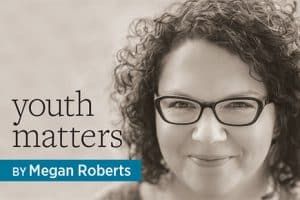
In the current digital landscape, library users require access to electronic content for learning, teaching, and research purposes. Information needs often surpass available resources, and librarians must provide evidence to justify purchases or requests for budget increases. By using quantitative methods like cost analysis to document collection use and impact, managers can demonstrate how collection development initiatives align with patron needs and the overarching goals of library administrators or funding agencies.
The term “quantitative analysis” can seem daunting. But like many other professionals, I developed research skills on the job and jumped at any opportunity to learn about quantitative methods. One of the challenges I faced was how to make sense of data sources and use them in ways that support effective decision making. Over a period of four years, I experimented with many research tools and how they can help evaluate electronic collections. I learned that quantitative analysis doesn’t have to be intimidating. The most successful projects spring from genuine curiosity and a desire to understand the needs of a user community.
In the most basic terms, quantitative methods are concerned with collecting data that is structured, represented numerically, and answers the what or how of a given situation. Research questions are direct, quantifiable, and often contain phrases such as: What percentage? To what extent? How many? How much? Measurements like counts, proportions, and relationships provide the means to quantify variables, such as population demographics or the number of patrons who use a service or product. The results can help examine attitudes and behaviors, document trends, or verify anecdotal information.
Quantitative analysis begins with informed questions about collections or services. Build a foundation of knowledge about the library system to bring focus and relevance to the study. Consider the following categories of information:
- the mission and identity of the library
- available resources
- the characteristics of stakeholders
- available facilities and equipment
- descriptions of relevant programs and services
Next, locate data sources that provide the necessary ingredients for a quantitative investigation. For example, many local and external data sources can be classified according to performance measures that answer the what or how of a quantitative research question.
Quantitative analysis begins with informed questions about collections or services.
Collection input and output measures. Examine the cost of collection materials and the quantity of items received. An example is recording the cost of an e-journal subscription, the number of titles in the subscription, and the degree of title overlap.
Effectiveness indicators. Evaluate the cost of a product against its value to users. One example is calculating the cost per use of an e-journal subscription by comparing the total cost against usage and turnaway statistics (instances of users being denied access to a resource).
Domain measures. Examine the community a library serves. Examples include the size and demographics of the user community, attributes (for example, the number of undergraduate vs. graduate students), and information needs.
Finally, create a research road map that tracks the moving pieces of a quantitative investigation. Points to include are the project goal (what you hope to learn) and objective (the steps you will take to achieve your goal), a timeline, data collection and analysis methods, and a list of project deliverables.
Quantitative data sets can be examined from a variety of perspectives. Frame emerging trends into a story that can be shared with stakeholders. Background knowledge of the local patron community and library system serves as a compass; use this insight to analyze results and strengthen local collections. All data collected through quantitative investigation provides a baseline for future evaluation—each project provides a deeper understanding of collections and their value to patrons.


